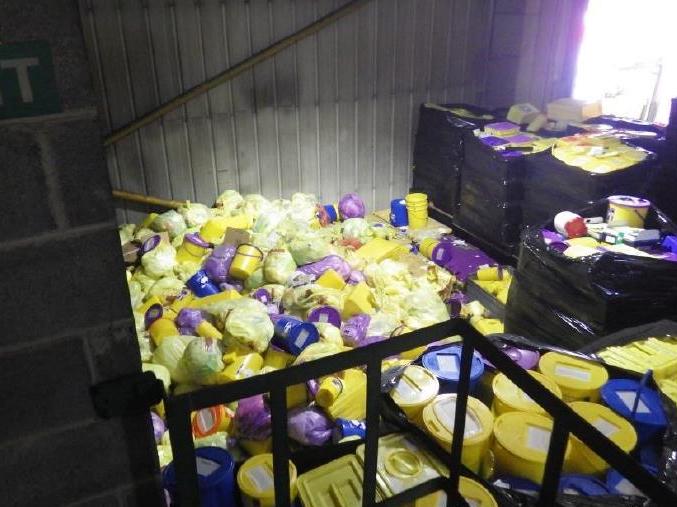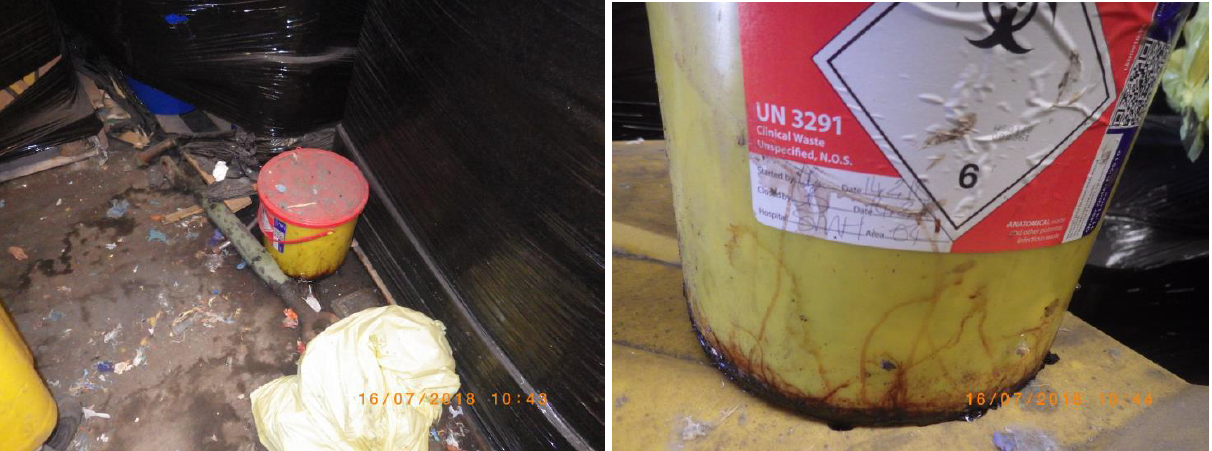NHS patient body parts stored unrefrigerated for six months at NHS waste firm, inspection reports reveal
‘Powerful odour of decaying flesh mixed with ... disinfectant’ so strong inspector could not stand it for more than a few seconds

Your support helps us to tell the story
From reproductive rights to climate change to Big Tech, The Independent is on the ground when the story is developing. Whether it's investigating the financials of Elon Musk's pro-Trump PAC or producing our latest documentary, 'The A Word', which shines a light on the American women fighting for reproductive rights, we know how important it is to parse out the facts from the messaging.
At such a critical moment in US history, we need reporters on the ground. Your donation allows us to keep sending journalists to speak to both sides of the story.
The Independent is trusted by Americans across the entire political spectrum. And unlike many other quality news outlets, we choose not to lock Americans out of our reporting and analysis with paywalls. We believe quality journalism should be available to everyone, paid for by those who can afford it.
Your support makes all the difference.Human remains from NHS patients were stored in unrefrigerated containers for more than six months by a scandal-hit waste firm, according to inspection reports detailing a “powerful odour of decaying flesh”.
Healthcare Environmental Services made headlines last year after it allowed a stockpile of hundreds of tonnes of clinical waste, including amputated body parts and organs, to build up.
The company had previously denied that any of the waste it had accumulated had been stored inappropriately and blamed a lack of incinerator capacity.
But reports from Environment Agency inspections, before news of the stockpiles broke, show basic failings, including leaking containers and drainage systems, waste stored in full sun and piles of hazardous waste mixed together.
Copies of reports seen by the Health Service Journal, which originally broke news of the stockpile, include accounts from EA officer Alan Johnston on an inspection of the company’s Normanton site in Yorkshire.
Upon opening the doors to the site’s faulty refrigeration unit, used for anatomical waste, Mr Johnston wrote he was met with “such a strong powerful odour of decaying flesh mixed with a highly intense chemical odour of disinfectant that I was unable to stay in the entrance to the unit for more than a few seconds”.
The refuse included two containers that had been at the site for more than six months and another bucket leaking what appeared to be blood.

Despite being in the middle of the heatwave, inspectors found human and surgical waste being stored outside the warehouse, in “full sun and under black shrink wrap despite the prolonged and extreme high temperatures that the country [was] experiencing”.
At the time of the inspection, the EA estimated more than 356 tonnes of waste was stored at Normanton, despite it only being licensed to store 70 tonnes.
Pictures show containers of toxic, clinical and anatomical waste, which are meant to be stored separately, dumped in overflowing piles at the site.
Healthcare Environment Services revealed before Christmas it would be going into administration and had made staff redundant, although criminal investigations are still under way.
A company statement released in October when the revelations came to light said only 1 per cent of the waste it collected was anatomical.
“Anatomical waste is not stored on any of our facilities for longer than is allowed by permitted guidelines,” it added.
“All clinical waste is correctly stored, with anatomical waste kept in refrigerated units and not stored or driven around in vehicles, as has been claimed.”
An EA spokesman said: “HES has significantly and repeatedly breached its environmental permits by storing excess waste inappropriately at a number of its sites.
“In addition to our enforcement activity to clear the sites, we are undertaking a criminal investigation.”
The Independent called and emailed HES for comment but did not receive a response.
Subscribe to Independent Premium to bookmark this article
Want to bookmark your favourite articles and stories to read or reference later? Start your Independent Premium subscription today.
Join our commenting forum
Join thought-provoking conversations, follow other Independent readers and see their replies
Comments